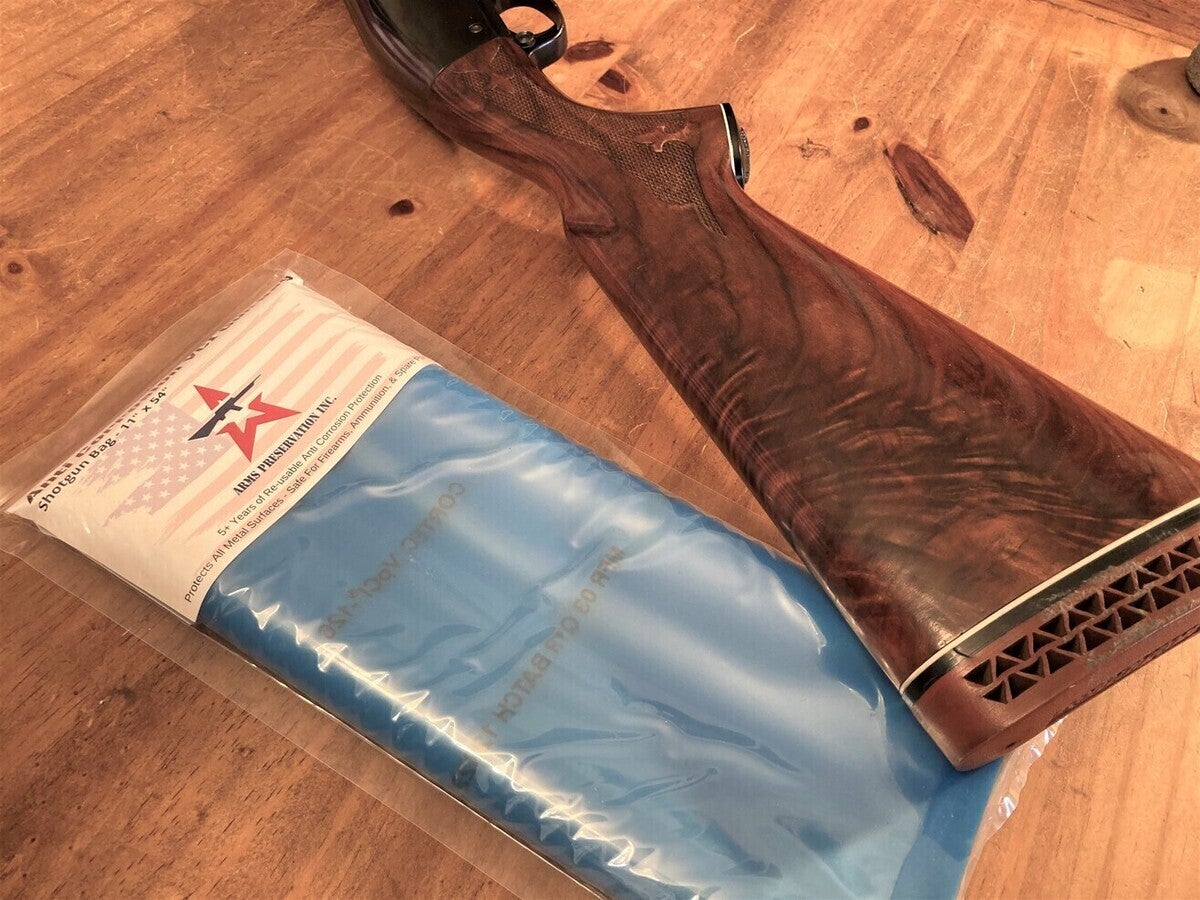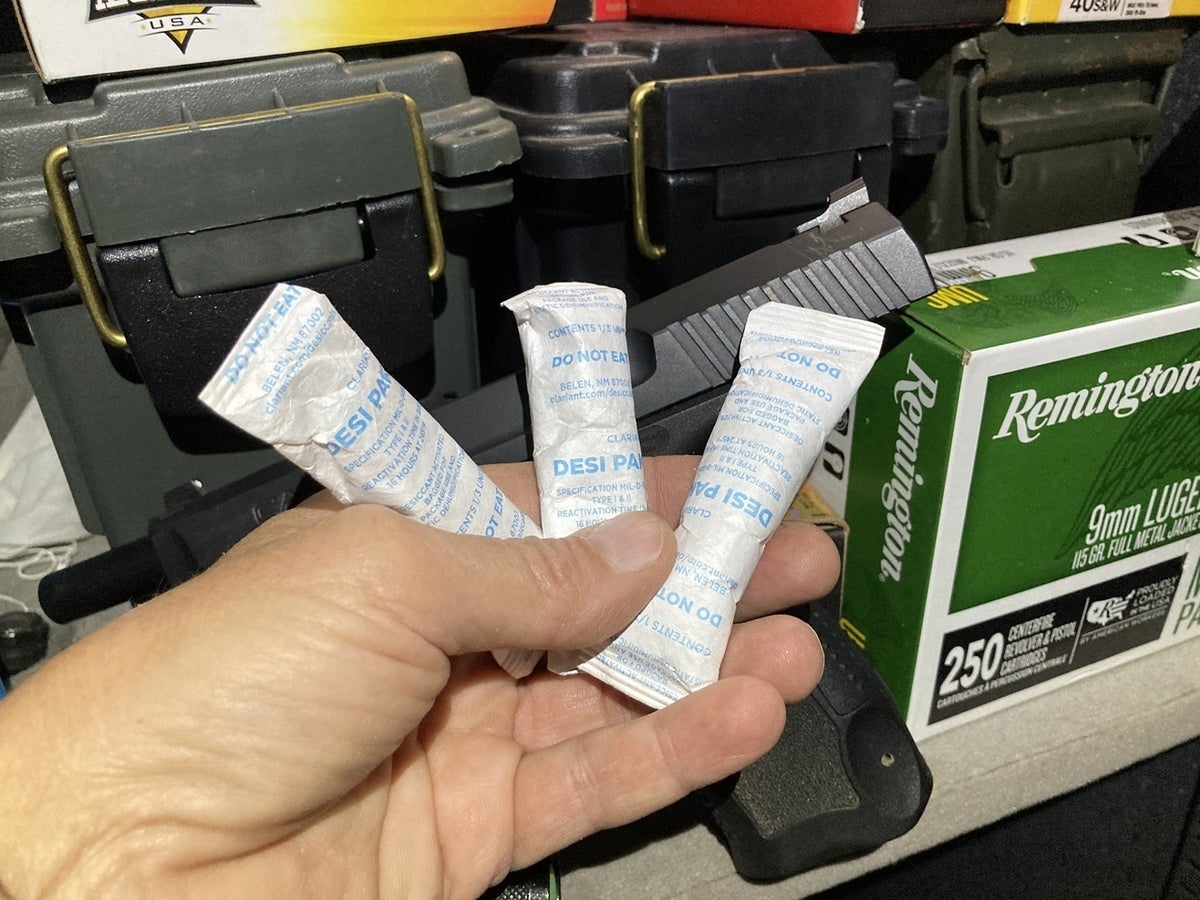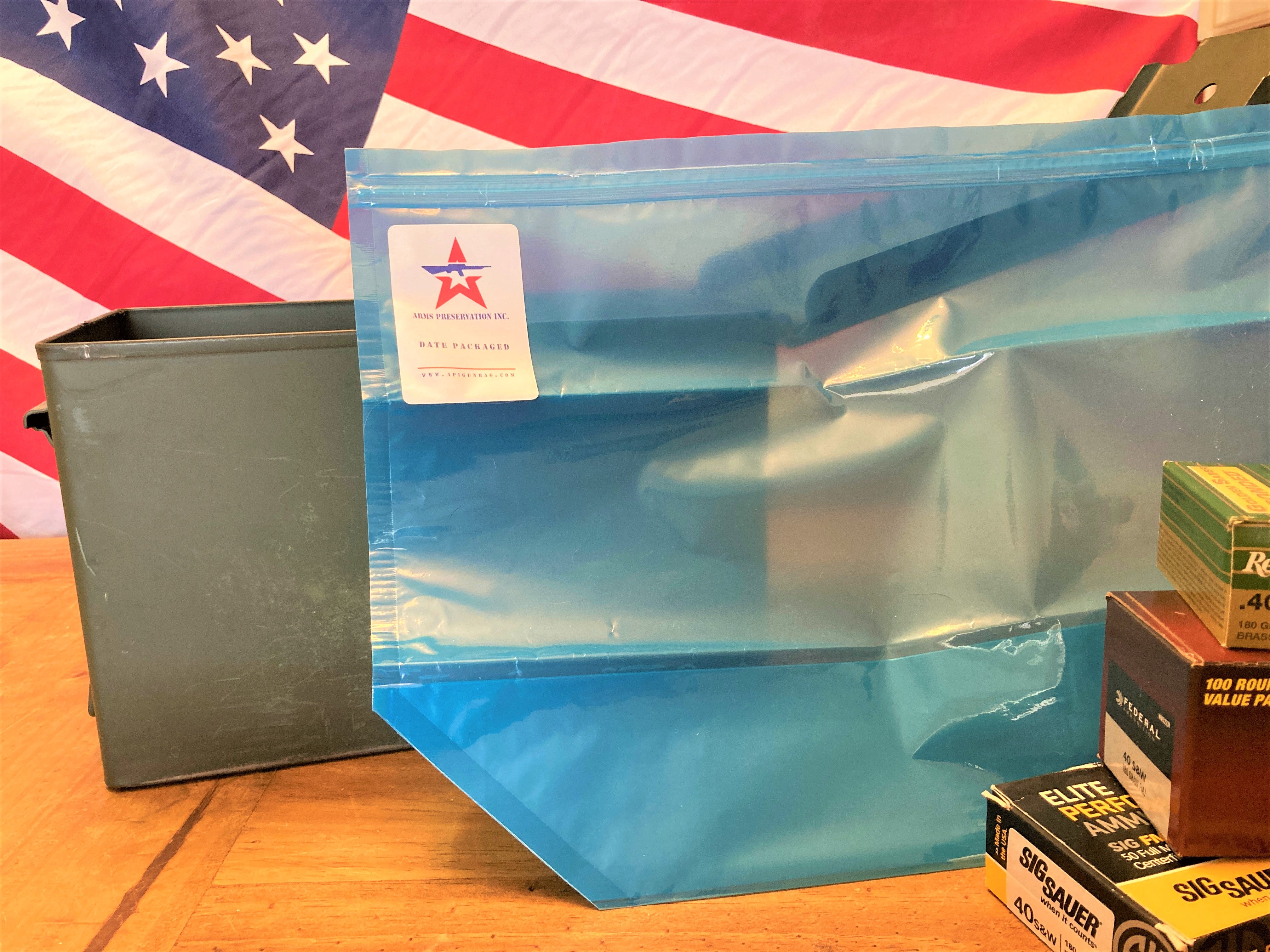Protecting Valuables – Storing Guns and Ammo Over the Long Haul
Eve Flanigan 01.04.22

It’s been said that guns have two enemies: politicians and rust. There’s plenty of information floating around about the former, but rust and other kinds of environmentally-caused corrosion can do guns and ammo in just as sure as a bad elected official’s pen. That’s why storing them properly is important.
Thanks also to bad politicians and bad economic policies, supply chain issues and general un-ease have caused ammunition prices to escalate and gun sales to reach record highs for months, now years, on end. It’s a safe assumption that there are tons of ammunition and hundreds of thousands of guns that have been “put up” for the proverbial rainy day. Scores of other people have stocked up on ammunition for hunting, plinking, competing, or training in the coming year. As the news reminds us on a too-frequent basis, even in the absence of political unrest, disasters like floods and wildfires can endanger shooting goods also. Whatever the threat is to stored ballistic goods, good storage methods can prevent most loss and preserve these assets until you’re ready to use them or pass them on to a successor. Here, we examine some new and old best practices for gun and ammo preservation.

A dry atmosphere is the single biggest asset in storage. Some areas of the country are naturally dry, but even there, high-humidity days can initiate deterioration. It only takes a little moisture exposure for rust to begin. To keep your goods from clinging to moisture at the molecular level, be sure that guns are properly cleaned and lubricated before being placed in storage. The same goes for any ammunition, especially reloaded ammo, that’s put up. Clean away dirt, debris, and the invisible but moisture-loving, oily residue that fingers leave behind. This gives moisture less to cling to. Use a quality lubricant on steel gun components before placing firearms into storage. This forms a thin barrier against moisture.
Storing Ammo & Firearms – Gun Safes
Gun Safes are usually a great physical barrier between guns, ammo, and environmental damage, not to mention that they provide a measure of security in keeping the goods out of reach of any unwanted handlers. Large, sturdy safes are usually fire-rated for a given number of hours of exposure—protecting what’s inside from all but the most heinous of fiery disasters. While safes might also be waterproof, the air they contain does have the same moisture level as whatever the ambient air did the last time the door was locked shut. For that reason, it’s a good idea to add moisture reduction products inside the safe. Moisture-absorbing desiccant packets containing silica gel are the least expensive and most available. But it’s not enough to toss in the little packet that came with the sneakers you bought six months ago. Seek out larger packets made for larger space, and use several on each level within the safe. For best results, change them out annually, more often if you’re opening the safe frequently in humid climates.

Storing Ammo & Firearms – Military Ammo Cans
Military Ammo Cans are a great storage solution for smaller guns, components, and of course, ammunition. They’re also convenient to grab and take to the range. As with safes, it’s a good idea to toss a silica gel packet or two in every can along with handguns or ammo that’s stored within. When possible, use metal, not plastic, ammo cans. Plastic is sturdier and more susceptible to degradation from exposure to UV radiation and extreme temperatures. That includes PVC, an often-named gun storage solution that’s highly susceptible to deterioration, especially without threaded end caps.
Organizing ammo according to caliber/type and labeling cans is a good way to make life easier when you take out those same cans one, two, five, or twenty years from now. Whenever possible, keep ammo in its original factory boxes so that you or other future users can easily identify it and safely use it. If you’ve handled ammunition, wipe each cartridge with a clean, lint-free cloth before storing. This is particularly the case for any ammo with brass or copper components, which the vast majority has. The sludge that these metals build up when exposed to moisture, oils, or solvents can gum up an action in short order. The extreme heat of detonation renders the corroded material into a veritable glue.
Storing Ammo & Firearms – High-Tech Enhancements
High-Tech Enhancements are my name for several products that can seal gear inside, and/or emit gases that defeat would-be corrosive activity. Flambeau’s Zerust is one such product. These plastic panels can be tucked into a safe or gun case to prevent corrosion through atmospheric control. The downside is, they’re only good for a year or a little longer; less if the safe or case is opened and re-closed occasionally.

Another high-tech product that’s new on the market is a series of storage bags that promise watertight protection in addition to a proprietary method of gaseous atmospheric change. Arms Preservation, Inc. (API) Storage Bags appear to be a great solution for protective storage for five years; perhaps a bit longer if the seal is not broken during storage. API makes a series of bags to fit hunting or tactical rifles, shotguns, pistols, and there’s even one with a flat bottom that provides maximum storage with extra protection inside an ammo can. Starting at $11.99, these box liners, paired with a good ammo can, show great promise as a solid plan for long-term storage. While they don’t provide impact protection for guns, likewise inside a safe or case, API bags are a superior option compared to desiccant packets.
With continued threats of bans on the gear many of us consider basic necessities of gun ownership, decreased availability and higher prices for ammunition, motivation to stockpile and store is perhaps higher than ever among gun owners. Guns and ammo are not only recreational and survival tools, they can also represent an investment. With a solid storage method, the ballistic goods you have or acquire today can be of service to you or your heirs decades from now, maybe longer.